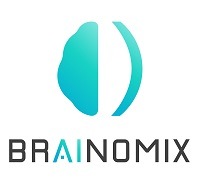 Brainomix has announced new data from studies that were presented this week at the Society of NeuroInterventional Surgery (SNIS) annual meeting (22–26 July, Colorado Springs, USA). The research was conducted in collaboration with the Mayo Clinic (Rochester, USA), West Virginia University (Morgantown, USA), and Boston Medical Center (Boston, USA).
Brainomix has announced new data from studies that were presented this week at the Society of NeuroInterventional Surgery (SNIS) annual meeting (22–26 July, Colorado Springs, USA). The research was conducted in collaboration with the Mayo Clinic (Rochester, USA), West Virginia University (Morgantown, USA), and Boston Medical Center (Boston, USA).
According to a Brainomix press release, the research has highlighted some of the cutting-edge, artificial intelligence (AI)-enabled technology that the company has developed within its pipeline for the Brainomix 360 Stroke platform, representing “groundbreaking capabilities” that will allow physicians to extract maximal value from universally available non-contrast computed tomography (NCCT) scans across stroke networks.
Key studies that were presented at SNIS 2024 and are highlighted in Brainomix’s recent release include:
“AI derived clot characteristics predict recanalisation success in large vessel acute stroke patients undergoing mechanical thrombectomy”—a research collaboration between Brainomix and West Virginia University in which baseline NCCT scans from patients with large vessel occlusion (LVO) were analysed using Brainomix 360 e-ASPECTS to identify hyperdense clots and quantify their length. The results showed that clot biomarkers from NCCT are predictors of successful recanalisation and could facilitate the planning of mechanical thrombectomy procedures.
“Large vessel occlusion detection in acute ischaemic stroke using non-contrast CT”—a multisite collaboration with the Mayo Clinic, West Virginia University and Boston Medical Center validating Triage Stroke as a reliable tool for LVO detection. The authors concluded that, when coupled with clinical information such as National Institutes of Health stroke scale (NIHSS) scores, the tool may help centres to identify thrombectomy candidates, especially those with constrained resources and basic imaging.
“How dark is too dark? Using net-water uptake to predict futile recanalisation following mechanical thrombectomy”—another multisite collaboration, this one between the Mayo Clinic, West Virginia University and Brainomix. Ischaemic core volume and depth of hypoattenuation using net water uptake (NWU) were quantified from baseline CT scans using Brainomix 360 e-ASPECTS, with results showing that NWU extracted automatically from routine imaging may help identify patients at risk of futile recanalisation, especially those with large cores.
“The studies presented this week at SNIS highlight the clinical value of the Brainomix 360 Stroke platform, particularly relating to the e-ASPECTS and Triage Stroke algorithms that assess non-contrast CT scans, which are universally available to all stroke centres across the USA,” said Ansaar Rai (West Virginia University, Morgantown, USA). “The results indicate that these algorithms generate clinically relevant results for frontline stroke physicians that could help them to better manage stroke patients eligible for mechanical thrombectomy across all centres within a network.”
Brainomix says that its US Food and Drug Administration (FDA)-cleared Brainomix 360 Stroke platform is powered by state-of-the-art AI algorithms that provide real-time interpretation of brain scans to aid treatment and transfer decisions for stroke patients, with the aim of enabling more patients to receive the right treatment, in the right place, at the right time.
“The studies presented this week at SNIS symbolise our ongoing commitment to scientific excellence and reflect the successful partnerships that we have forged with leading academic institutions across the USA to jointly explore the frontiers of stroke AI imaging,” Michalis Papadakis, chief executive officer and co-founder of Brainomix. “Together, we are identifying exciting opportunities that may expand the capabilities of physicians to better manage stroke patients across all levels of stroke networks with our technology.”
Source link : https://neuronewsinternational.com/brainomix-announces-presentation-of-us-data-validating-ai-technology-in-stroke-care/
Author :
Publish date : 2024-07-26 12:49:32
Copyright for syndicated content belongs to the linked Source.
